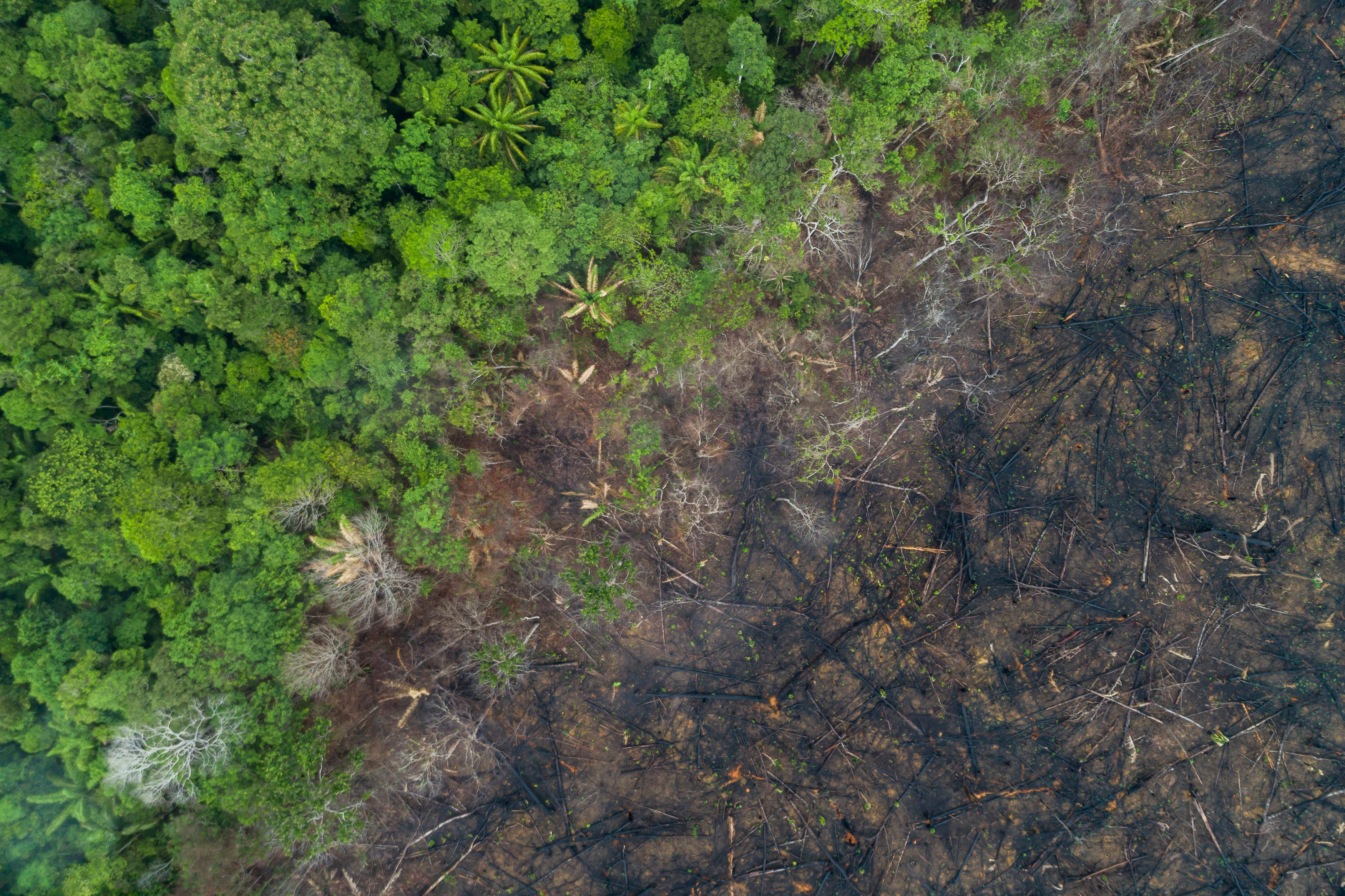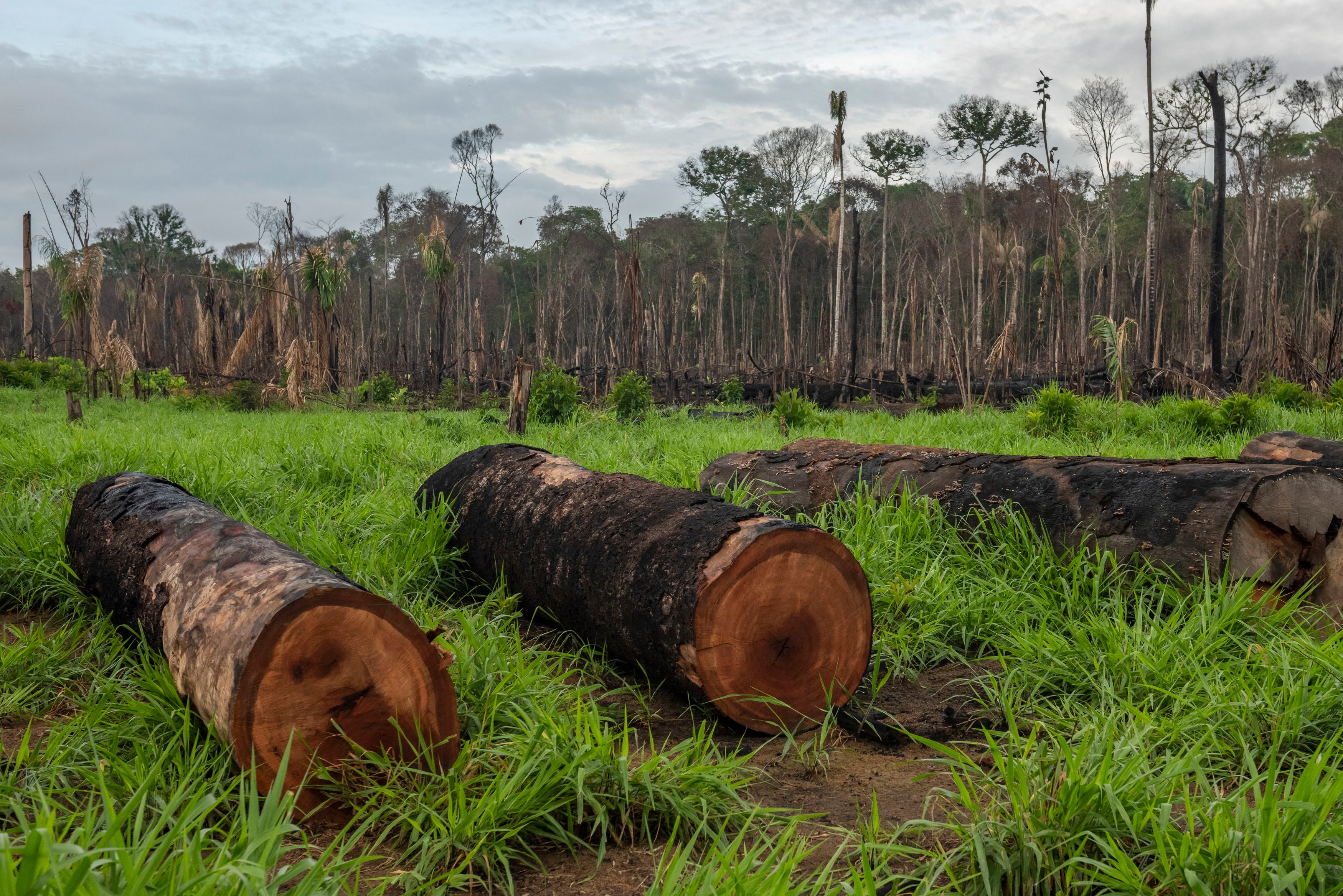In 2021, leaders pledged to end deforestation. Instead, forests are dying
Cutting down and clearing trees is second only to burning fossil fuels as a creator of carbon emissions. Fighting the climate crisis becomes inexplicably harder without forests

Your support helps us to tell the story
From reproductive rights to climate change to Big Tech, The Independent is on the ground when the story is developing. Whether it's investigating the financials of Elon Musk's pro-Trump PAC or producing our latest documentary, 'The A Word', which shines a light on the American women fighting for reproductive rights, we know how important it is to parse out the facts from the messaging.
At such a critical moment in US history, we need reporters on the ground. Your donation allows us to keep sending journalists to speak to both sides of the story.
The Independent is trusted by Americans across the entire political spectrum. And unlike many other quality news outlets, we choose not to lock Americans out of our reporting and analysis with paywalls. We believe quality journalism should be available to everyone, paid for by those who can afford it.
Your support makes all the difference.Two years ago world leaders gathered at the Cop26 climate summit and basked in the glory of a lofty pledge to reverse decades of deforestation and restore forests by 2030.
However, on Monday new findings revealed that humanity is drastically off-course on that commitment, as forests around the world fail at an alarming rate.
Deforestation increased by 4 per cent last year from 2021, according to the new assessment from research and civil society groups, a failure that will only worsen the deepening climate crisis. Some 25,000 square miles of forest was destroyed in 2022 — an area twice the size of Belgium.
An astonishing 96 per cent of forest loss is taking place in tropical regions of the Amazon, Congo and Southeast Asia, where a football field of forest is lost every five seconds.
Cutting down and clearing trees is second only to burning fossil fuels as a source of carbon emissions. Fighting the climate crisis becomes inexplicably harder without forests.
In the Amazon, which has lost 17 per cent of tree cover, scientists warn that the rainforest is fast approaching a tipping point — a precipice estimated at 20-25 per cent deforestation. This could trigger dieback, the large-scale, permanent degradation which spreads across the entire biome.
Breaching tipping points in tropical forests, which for milennia have absorbed vast amounts of carbon, would turn them from allies in the climate crisis to weapons which emit billions of tonnes of emissions.
The shift would have a devastating impact on curbing global temperature rise to 1.5 degrees Celsius, and avoiding irreversible impacts.

Along with the climate crisis, humanity is driving a mass extinction of species at 1,000-10,000 times natural levels, scientists say. Saving forests, home to 80 per cent of species, are critical to halting this decline.
One-quarter of active ingredients in cancer medications are found in forests. Scientists estimate thousands of undiscovered species exist in the Amazon alone.
It’s a vicious cycle: Deforestation worsens the climate crisis which in turn intensifies heat, wildfires and droughts, killing off trees.
Protecting forests is widely-recognized as critical in cutting global emissions in this crucial decade.
“That 2030 goal is not just nice to have, it’s essential for maintaining a livable climate for humanity,” said Erin Matson, Forest Declaration Assessment coordinator, at a press briefing.
Behind the widespread deforestation is vast amounts of money being channelled into harmful practices such as intensive agriculture, logging, ranching and mining.
Investments into harmful industries stands at $500 billion annually, while just $2.2 billiongoes towards protecting forests annually, according to the assessment.

But there is enough time to reverse course, leading forest experts say.
WWF, the world’s largest conservation group, also issued a “blueprint” on Monday to save forests ahead of the Three Basins Summit, to be held later this week in the Republic of Congo, and Cop28 in Dubai this December.
The Forest Pathways 2023 report argues that if governments and businesses keep current promises, it is still possible to reverse the forest loss.
“We do not need new forest goals: we need uncompromising ambition, speed and accountability to fulfill the goals that have already been set. It is time to step up,” said Fran Price, WWF Global Forests Lead.
The action plan includes ending investments and subsidies that destroy forests; cutting commodities linked to deforestation out of global supply chains; and removing barriers to “forest-friendly” goods.
That 2030 goal is not just nice to have, it’s essential for maintaining a livable climate for humanity.
More rights, responsibility and finance should flow to Indigenous peoples and local communities, WWF says, and research has repeatedly proved that forests are better protected in their care. Some 60 million Indigenous peoples live in forests worldwide.
While the new findings offered little cause for celebration at a global level, there were national success stories, researchers found.
More than 50 countries are on track to eliminate deforestation within their borders by 2030 while tropical regions of Asia are not far off the goal, thanks largely to Indonesia and Malaysia which have strong laws and enforcement, and recognition for the rights of Indigenous peoples and local communities.
In the Amazon rainforest, there are bright spots on an otherwise bleak landscape. While the Brazilian Amazon has suffered extreme losses in recent decades, there has been a sharp decline in deforestation since Luiz Inácio Lula da Silva became president earlier this year.
Edegar Oliveira, from WWF-Brasil, explained that there had been a tightening of forest laws and a new respect for Indigenous rights under Lula’s administration. “This showcases what could happen when countries with good laws actually invest in enforcing them,” he said.
In neighboring Colombia, where half the country is covered in rainforest, the path to conservation has been a risky and uncertain one, underlining that there’s no “one-size-fits all” approach, researchers said.

Decades of guerilla warfare, cartel operations and narco-terrorism in Colombia played out in its forests. More than 60 per cent of the world’s biodiversity hotspots have seen armed conflict in recent years — meaning tackling violence is part-and-parcel of saving forests.
In 2016, the Colombian government signed a peace deal with the Revolutionary Armed Forces of Colombia, known as FARC, Latin America’s largest guerilla movement.
FARC oversaw a large part of Colombia’s prolific cocaine trade and key to the peace process was bringing this to an end.
While the peace deal has brought some level of stability to Colombia, it has had mixed impacts on forests and rural communities.
In some areas, conservation projects are now possible. “Our main goals are to defend the environment, the land, and farmers rights,” said Marisela Silva, a farmer turned WWF forest monitor in Guaviare, who was previously forced to grow coca plants for cocaine by FARC.
“We’ve created a program that’s motivated many families to join us and keep working towards preserving our environment.”
Ms Silva said that the conservation project was working as it was run by local people and not outside groups.
“With us that’s not the case. [We are] people from here, and farmers know that we are working towards improving and preserving the environment so our future generations can carry on and replicate our work,” she added.
Despite the peace deal, armed conflict and violence remains prevalent in rural parts of Colombia. Since FARC disbanded, kidnappings, rape and prostitution are on the rise are on the rise as smaller, disenfranchised and uncoordinated guerilla groups move into areas across the Amazon.
Colombia has the world’s third-largest internally displaced population, surpassed only by DR Congo and Syria, according to the Norwegian Refugee Council.
Colombia’s forests have also been subject to land grabs for cattle ranching and illegal gold mining – specifically in areas where cocaine production has disappeared, according to Veronica Robledo from WWF-UK.
An approach to forest protection that involves an array of parties been proving successful rather than expecting countries to shoulder it alone.
The cross-border Amazon Alliance is trying to reduce gold mining and its associated mercury contamination in the Amazon. The UK government has partnered with WWF-Colombia and the country’s biggest retailer, Grupo Exito, to try to make cattle ranching more sustainable and increase transparency in the supply chain.
“The issue is that loss anywhere is loss,” said Ms Matson. “What we need is all countries, all jurisdictions and all companies to strengthen their forest policies, their forest legal frameworks to raise the bar across the board.
“Ending deforestation and degradation and ecosystem conversion has to be a shared responsibility for saving global forests.”



Join our commenting forum
Join thought-provoking conversations, follow other Independent readers and see their replies
Comments